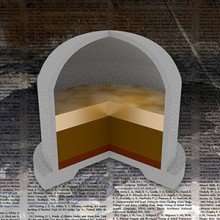Scientific challenges and opportunities for remediating radioactive waste

One of the nation's enduring scientific challenges has been to find effective ways of remediating millions of gallons of chemical and radioactive waste remaining from Cold War activities. Now a team of experts has combed through more than 100 studies to determine what is known of the complex chemical and rheological aspects of the waste and identify scientific issues that must be resolved to finally reach the end goal of cleanup.
Scientists and engineers have worked decades to find solutions, particularly for chemical and radioactive waste in underground storage tanks at the Hanford Site in southeast Washington state. While the origins of the waste have been well documented, tank-to-tank transfers, mixing, and previous remediation attempts have complicated the chemistry and physics of the material. A thorough understanding of underlying scientific issues provides a stronger foundation for engineering solutions, giving decision makers more confidence to move forward with fewer delays.
Scientists from the Pacific Northwest National Laboratory, cleanup contractor Washington River Protection Solutions, and Washington State University scoured scientific literature to identify research that has informed current understanding of tank waste. Much has been accomplished, including beginning the construction of a vitrification plant to solidify this waste for safe storage. Perhaps the greatest remaining challenge is to develop the scientific underpinnings of the complex particle interactions that will occur when waste is removed from the tanks and pumped through pipes for further treatment and vitrification.
Previous work at EMSL, the Environmental Molecular Sciences Laboratory, a U.S. Department of Energy user facility, helped develop an empirical model of the materials inside the tanks, but more work is needed to predict how the waste will behave during processing. Recent advances in aberration-corrected transmission electron microscopy, in situ microscopy, and theoretical modeling across scales show promise. Information from such studies, coupled with the ability to transport radioactive materials to EMSL and use its atom probe tomography, could allow scientists to build robust predictive physics-based models to inform and guide cleanup efforts.
More information: Reid A. Peterson et al. Review of the Scientific Understanding of Radioactive Waste at the U.S. DOE Hanford Site, Environmental Science & Technology (2017). DOI: 10.1021/acs.est.7b04077
Journal information: Environmental Science & Technology
Provided by Environmental Molecular Sciences Laboratory


















